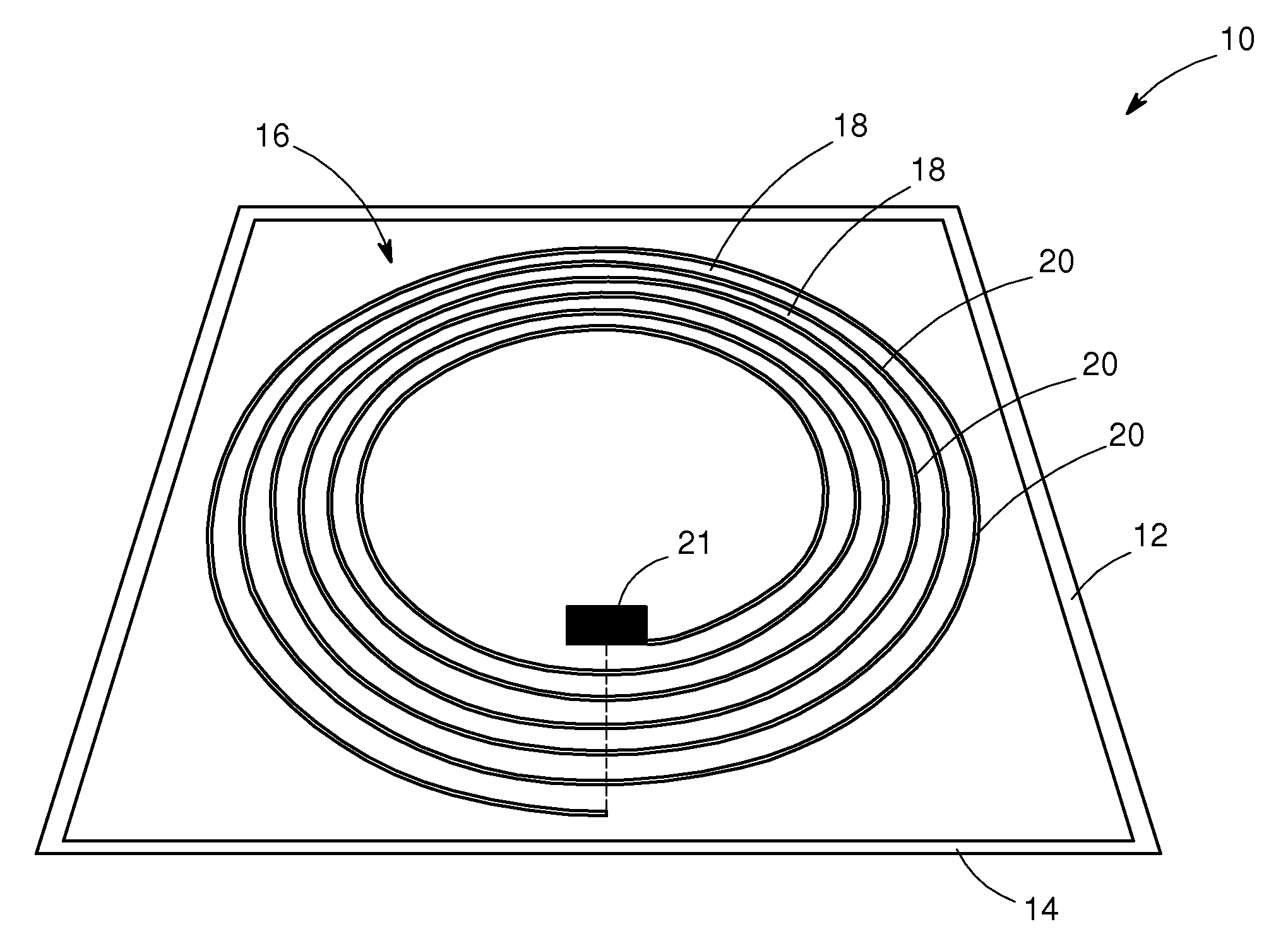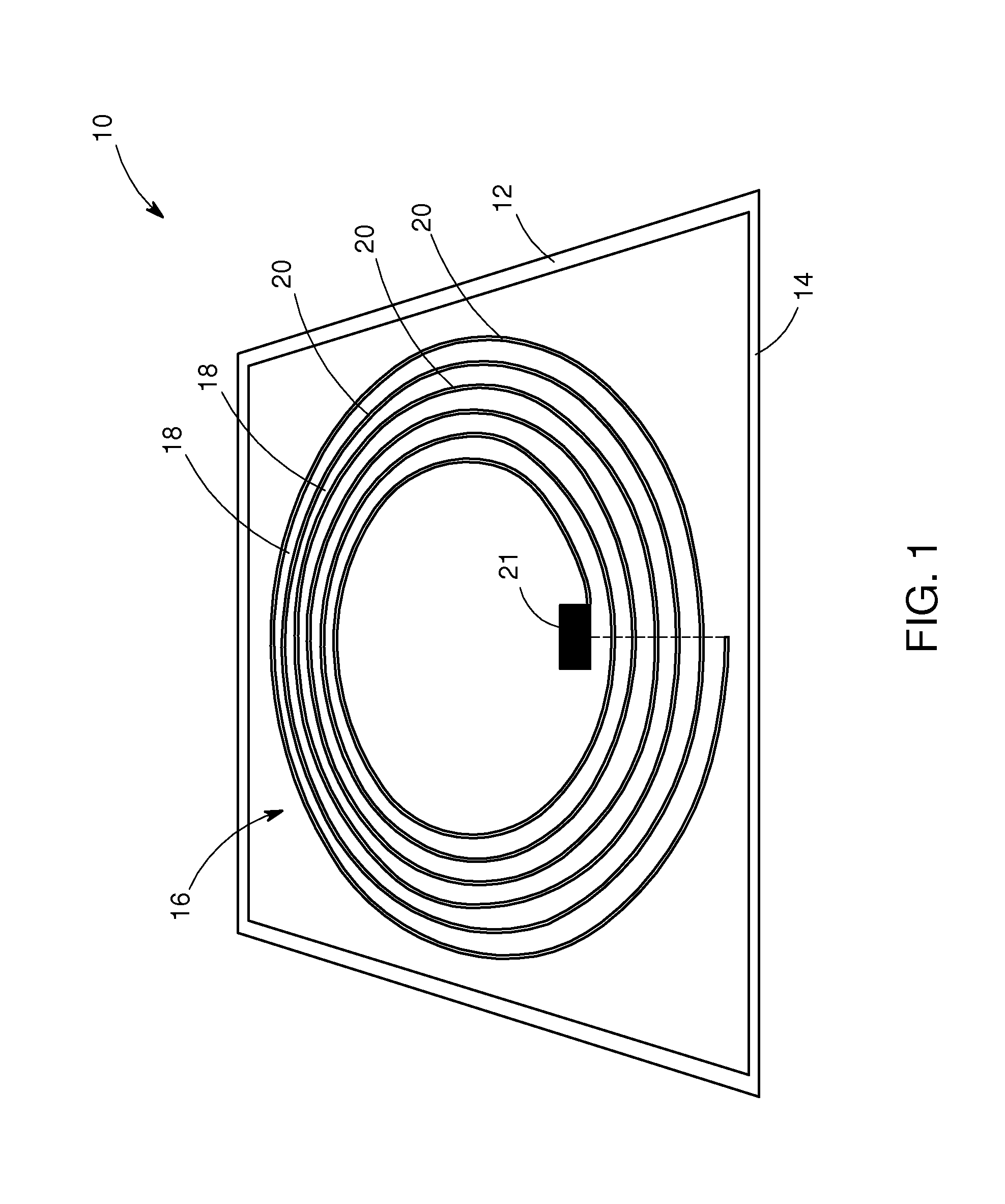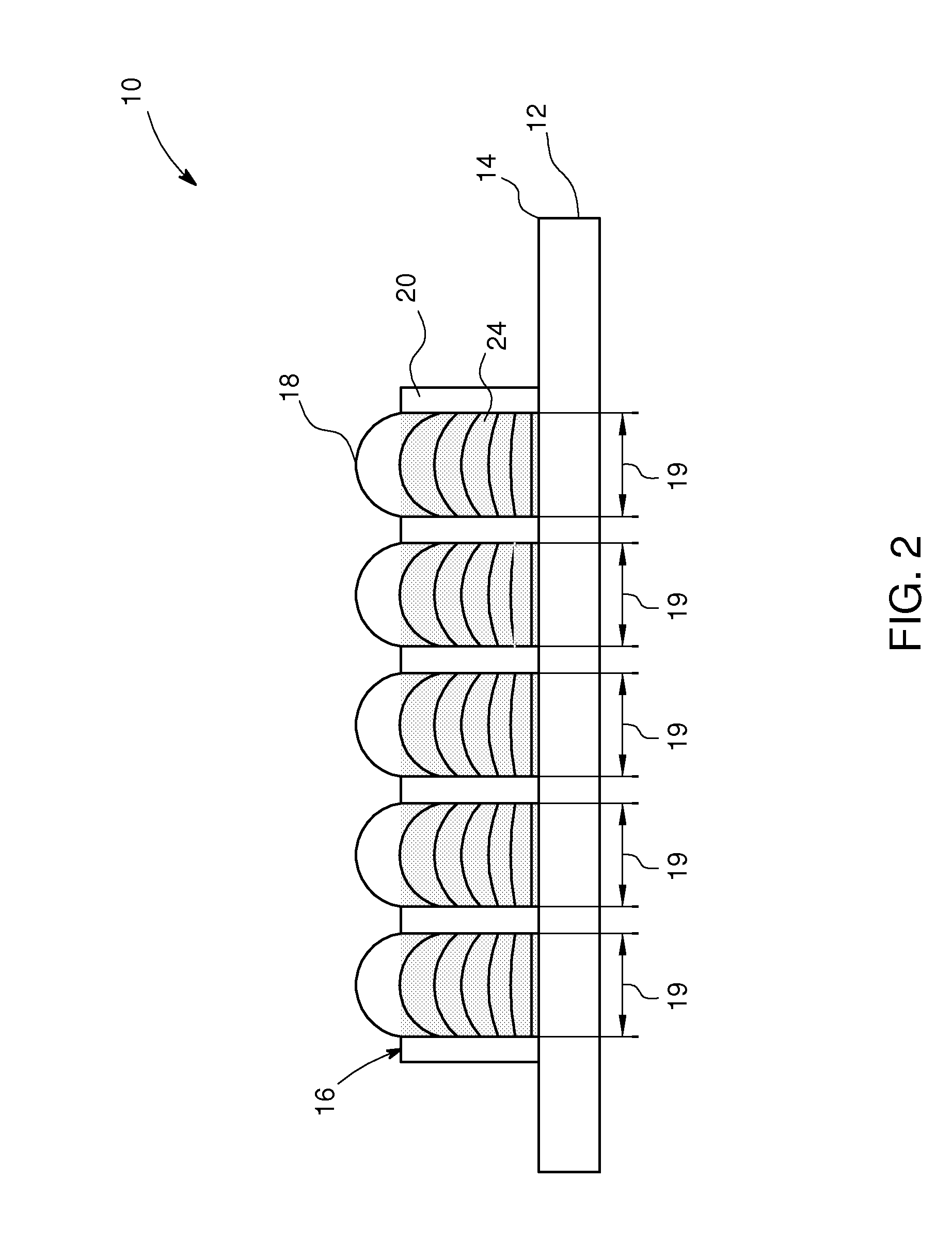Methods for analyte detection
a technology of analyte detection and sensor, applied in the direction of resistance/reactance/impedence, instruments, measurement devices, etc., can solve the problems of low selectivity of currently known sensors under such conditions, high background interference, and limited applicability of impedance spectroscopy to practical sensors for detection of trace levels of analytes, etc., to achieve high sensitivity, selectivity and reliability.
- Summary
- Abstract
- Description
- Claims
- Application Information
AI Technical Summary
Benefits of technology
Problems solved by technology
Method used
Image
Examples
example 1
[0096]As an example, polyaniline (PANI) polymer was selected to create a response pattern of various analytes when PANI is deposited onto the resonant sensor with the multivariate signal transduction. It is known that the response mechanism of PANI to NH3 involves polymer deprotonation, while the response mechanism to H2O involves formation of hydrogen bonds and swelling. Results of sensor exposures to NH3 and H2O vapors are presented in FIG. 8. Deprotonation of the film upon NH3 exposures resulted in the increase in film impedance Zp and shifts of the sensor resonance Fp, F1, and F2 to higher frequencies. The formation of hydrogen bonds and swelling of the polymer upon H2O exposures resulted in the decrease in Zp and shifts of Fp, F1, and F2 to lower frequencies. Measurements of multiple output parameters from a single sensor revealed different recovery kinetics of responses Zp, F1, F2, and Fp during experiments with NH3. Responses Zp, F1, and Fp showed a partial recovery from NH3,...
example 2
[0097]A poly(fluorene)-DPP copolymer (PFDPP), a flexible polymer, was used as the sensing material. The structure of the copolymer is given by the below structure:
[0098]This copolymer was used to test the response for analytes such as trichloroethylene (TCE), toluene and water vapor. FIG. 9 line plots 44, 46, 48 illustrate the variation with time in the observed resonance frequency with the introduction of TCE, toluene and water vapor respectively. The observed response to TCE at the lowest tested concentration of 0.02 P / Po was 20 times stronger than the response to toluene, wherein Po is the saturated vapor pressure of tested vapor and P is its partial pressure during the test. Furthermore, response to 0.02 P / Po of TCE was about 10 times stronger than response to the highest tested water vapor concentration of 76% RH and the signal response to water was in the opposite direction than to TCE or toluene.
[0099]In some embodiments, the conjugated PFDPP copolymer also showed good respon...
example 3
[0100]A homo-polymer of triarylamines (PTA), a rigid homo-polymer, was used as the sensing material. The structure of the conjugated homopolymer is given by the structure below:
[0101]Unlike trichloromethane, the solubility of PTA in dichloromethane was very poor. The selectivity of this polymer was tested in response to trichloromethane and dichloromethane vapors while water vapor was used as an interference (FIG. 11). An examination of the baseline corrected Zp (complex impedance) response for water (line plot 60), trichloromethane (line plot 62) and dichloromethane (line plot 64) shows a signal decrease upon exposure to all tested vapors. The Fp response to water vapor (66) even at 76%RH was almost undetectable, while response to trichloromethane vapor (line plot 68) showed an increase in signal. The response to dichloromethane vapor (line plot 70) showed a decrease in signal.
[0102]Other some embodiments describe, several other candidates for the selectivity to trichloromethane / di...
PUM
 Login to View More
Login to View More Abstract
Description
Claims
Application Information
 Login to View More
Login to View More - R&D
- Intellectual Property
- Life Sciences
- Materials
- Tech Scout
- Unparalleled Data Quality
- Higher Quality Content
- 60% Fewer Hallucinations
Browse by: Latest US Patents, China's latest patents, Technical Efficacy Thesaurus, Application Domain, Technology Topic, Popular Technical Reports.
© 2025 PatSnap. All rights reserved.Legal|Privacy policy|Modern Slavery Act Transparency Statement|Sitemap|About US| Contact US: help@patsnap.com



